Beppu is a hot spring town no matter what anyone says. There are eight hot spring places within this small city, and steam can be seen rising from everywhere. Each hot spring has its own unique characteristics, with different smells and different atmospheres in the town. There are also tourist spots that are unique to the hot springs called "hell," and hot springs are an indispensable part of the town.
Recently, the "healing" effects of each hot spring have been scientifically proven. When you enter the hot springs in Beppu, you will not just feel "somehow healed," but you will actually become healthier.
Beppu, a hot spring wellness town, please enjoy your hot spring trip in Beppu.
Beppu is number one in Japan in terms of both the amount of gushing water and the number of sources. The amount of water and number of springs are far superior to any other place in Japan. Beppu boasts a very long history and was mentioned as having life-saving hot spring in the Iyo-no-Kuni Fudoki, compiled at the beginning of the 8th century.
There are records of sanatoriums built for wounded soldiers in Beppu, Kannawa, and Hamawaki during the Kamakura period.
There are eight hot spring resorts in Beppu City, called "Beppu Hatto".
Each of them has different characteristics, such as the quality of the springs, making it possible to enjoy a "hot spring tour" just within Beppu City. Beppu is truly a hot spring wonderland.


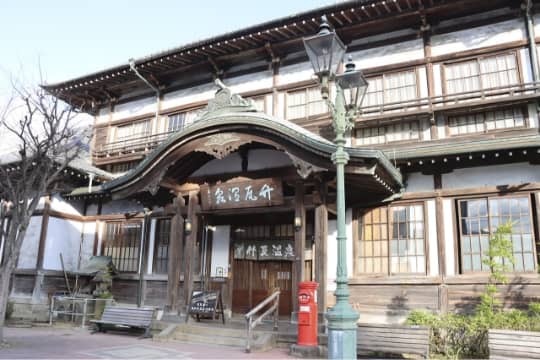
Although Beppu Onsen (hot springs) was first mentioned in literature at the beginning of the 8th century, it was not until the Edo period that it really attracted notice. In the Meiji period, Beppu Bay was prepared as a port and the railways such as the Nippo Line and Oita Betsudai began operating. Modern drilling techniques were also introduced, and the number of hot spring sources, hot spring facilities and hot spring inns increased. In the Taisho and Showa periods, the hot spring facilities were also enriched. Takegawara Onsen, a public hot spring with wooden tiled roofs which symbolizes Beppu is visited by many tourists from Japan and abroad.
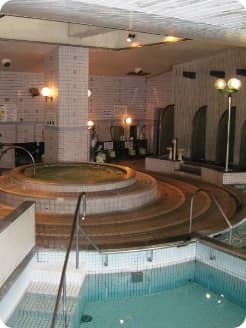

The name "Hamawaki" is derived from the appearance of hot springs gushing out from the beach and is considered the birthplace of Beppu Onsen. In the early Kamakura period, Asami Hachiman shrine was established, and in the Edo period, Hamawaki area developed into a Monzen town with a port and became a strategic point for land and sea transportation. The quaint Japanese inns still remain today, as well as remnants of the geisha quarter of the Meiji and Taisho eras. There are some baths and a training room at Yutopia Hamawaki run by the city. You can bathe in a hot spring and exercise there according to your health condition.
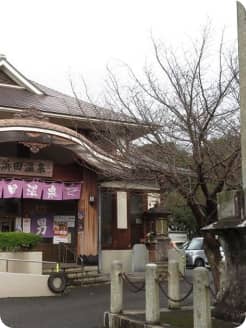
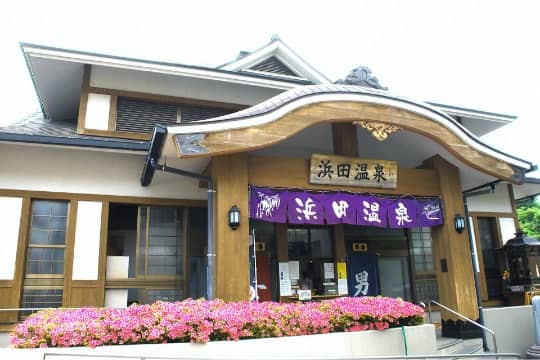
Natural sand bath has been a specialty since olden days. It is recorded in the Hokoku travel guide of the Edo period that "there is a hot spring of salty water in Satoya, which is also known as “Matekamegawa Village." This tells us that abundant hot springs have gushed out toward the coast since that time. Even today, the city-run Beppu Beach Sand Bath located in a corner of Shoningahama Park, is one of the most popular tourist spots. You can enjoy the unique experience of being buried up to your neck buried in sand heated by the hot spring while listening to the sound of the waves on the beach.
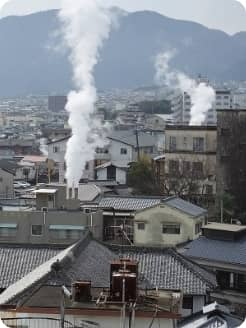
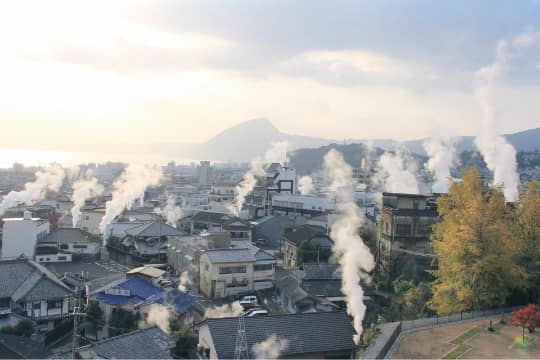
Here you can enjoy the streets Kannawa Onsen, which has the best atmosphere of the eight hot spring villages, where steam rises spots all over the place. One of the specialties is jigokumushi, which is eaten by steaming vegetables with abundant hot gases, many of Kannawa's original hot spring ryokan remain where you can enjoy hot spring healing while enjoying the meal of jigokumushi. There are also many public baths and footbaths. You can enjoy the unique mushiyu the features medicinal herbs spread on the floor heated by the steam of the hot spring that is said to have been founded by Ippen Shonin.


The Kankaiji Onsen was discovered in the Kamakura period. The Bungo Kunishi, written in the Edo period, says "it is extremely difficult to get to Kankaiji Temple, but the scenic view is so spectacular that it attracts many visitors." Nowadays there is a large resort hotel typical of Beppu and it has become a popular resort destination visited by many tourists. The large open-air bath that features the scenic view is also popular with tourists.
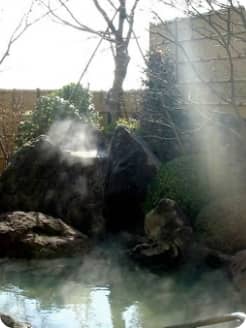

Blessed with abundant onsen, Horita Onsen has been an important transportation hub leading to Yufuin, Hita, and Dazaifu since ancient times, and has become a place of relaxation for travelers. It flourished as a onsen resort during the Edo period. Even today, sulfuric air flows out of the rice paddies and valleys, and abundant onsen are supplied to the city.
In addition to the bright indoor bath, there is also a quaint open-air bath at the city-operated Horita Onsen. There is also a resting room with a good view.
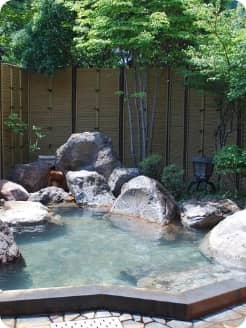

The history of this hot spring is so long that it is said that Emperor Daigo (895 AD) and Emperor Go-Reizen (1044 AD) were cured by the water as a treatment for illness, and it is still known as "wound healing hot spring.” In the Edo period, brushwood fossils were found there, so it came to be called "Shibaseki". The municipal Shibaishi Onsen also includes an open-air bath surrounded by trees in the mountains. As you relax, you will be healed not only by the hot springs, but also by the view and the voices of birds.

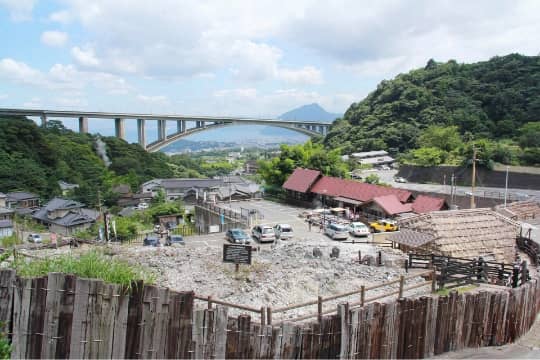
This area was the primary spot for obtaining alum in the Edo period. The Myoban Onsen developed as a spa along with with the prosperity of alum gathering business. Steam rises from the thatched hut called Yu-no-Hanagoya, providing the area with the smell of sulfur. The entire area is full to the brim with hot spring atmosphere. There are many acidic hot springs such as sulfur springs; it is also called Shampoo-no-Yu, because it makes your skin smooth. Many tourists also visit the area for mud baths that beautify the skin and jigokumushi steamed pudding.
For more than a thousand years, steam jets, hot mud and hot water have gushed out of the Kannawa and Kamegawa areas. In the old days, you couldn’t go there. These areas therefore came to be called "hell” by the locals. Nowadays, it’s not a scary place, but rather one of the tourist attractions unique to Onsen Wonderland Beppu.
Enjoy the wonderland created by the steam jets, hot mud, the source and nature, and the things you can experience there.








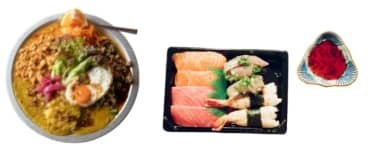
By the way, the number of authentic spice curry restaurants has increased recently.
Because there are many foreign students and tourists from overseas, there are also many restaurants that serve multi-national cuisine such as Thai, Sri Lankan, and Korean.
The fresh seafood dishes caught in the Beppu Bay right in front of you are also definitely worth trying.
So what would we recommend?
Honestly, it's difficult to recommend a specific dish because there are so many delicious things to eat in Beppu city that it's overwhelming when asked for a recommendation.

When you walk around the city, the faint scent of the hot spring tickles your nose, and you may come across locals carrying "ofuro" sets for entering the hot spring onsen. You can also enjoy the charm of a hot spring resort with its nostalgic atmosphere. In the Beppu Onsen and Hamawaki Onsen areas, you can encounter retro buildings and shops. There are stylish Western-style modern architecture, the variety stores and cafes that utilize the building that was previously a pleasure quarter of the red-light district, cafes that retain the atmosphere of the Showa era, cute tile-walled public baths, and even Japan's oldest wooden arcade. It's not uncommon to find charming buildings and shops when a cat invites you into an alley while exploring these back streets.
In recent years, Lake Shidaka, located on the mountaintop at an altitude of 600 meters, has been particularly popular. Surrounded by mountains, the scenery that changes from season to season, cherry blossoms in spring, deep green in summer and autumn leaves in autumn, and is another attraction that can only be found here where you can camp in such a magnificent nature. Spending a day looking at the blue sky reflected on the surface of the lake, the mountains that change color with each season, and the starry sky at night is rich and relaxes your body and mind. There is also a hiking course where Lake Shidaka is the starting and finishing point. It is also fun to feed carp and swans on the lake, or ride a boat.


In recent years, Lake Shidaka, located on the mountaintop at an altitude of 600 meters, has been particularly popular.
Surrounded by mountains, the scenery that changes from season to season, cherry blossoms in spring, deep green in summer and autumn leaves in autumn, and is another attraction that can only be found here where you can camp in such a magnificent nature.

Spending a day looking at the blue sky reflected on the surface of the lake, the mountains that change color with each season, and the starry sky at night is rich and relaxes your body and mind. There is also a hiking course where Lake Shidaka is the starting and finishing point. It is also fun to feed carp and swans on the lake, or ride a boat.
Beppu bamboo crafts are said to have originated when Emperor Keiko visited Beppu and his attendant discovered that there was a lot of high-quality bamboo and made rice bowls of bamboo. Surprisingly, it has a history of about 2000 years. The advanced techniques that have been nurtured and accumulated over a long history are now highly regarded in terms of art.
Bamboo crafts originating from Beppu, a production area of bamboo, continue to create new values and history.

There are many popular festivals and events that are crowded with many people every year, such as the Beppu Hatto Onsen Festival, which are held to express appreciation for the rich blessings of the the eight Beppu hot springs, as well as the Beppu Hi-no-Umi Festival, which is held in the summer,


This course will take you through the full assortment of Jigoku Meguri sightseeing spots rich in Beppu’s 1000-year history. In addition to onsen, there are many …

A “Jigoku Meguri” tour is a must for sightseeing in Beppu, which has the largest amount of onsen water in the world. You should experience the “hells” of Beppu, …

Beppu, is of course a town of onsen. The onsen of Beppu produce the largest volume of water of any place in the world; Beppu has many sightseeing spots that take …

What is Beppu Hatto? There are eight onsen resort areas in Beppu, i.e., Hamawaki Onsen, Beppu Onsen, Kankaiji Onsen, Horita Onsen, Myoban Onsen, Kannawa …